Is feeding your bottomless pit known as a teenager breaking the bank? As the mom of two teenage boys, I know a thing or two about the terrifying quantity of food that can be ingested by teens. And I also know all about the terrifying grocery bills that can accompany such appetites. But fear not! I’ve pulled together my favorite tips on how to feed teens on a budget. These tricks have worked for my family and I bet they can work for yours, too!
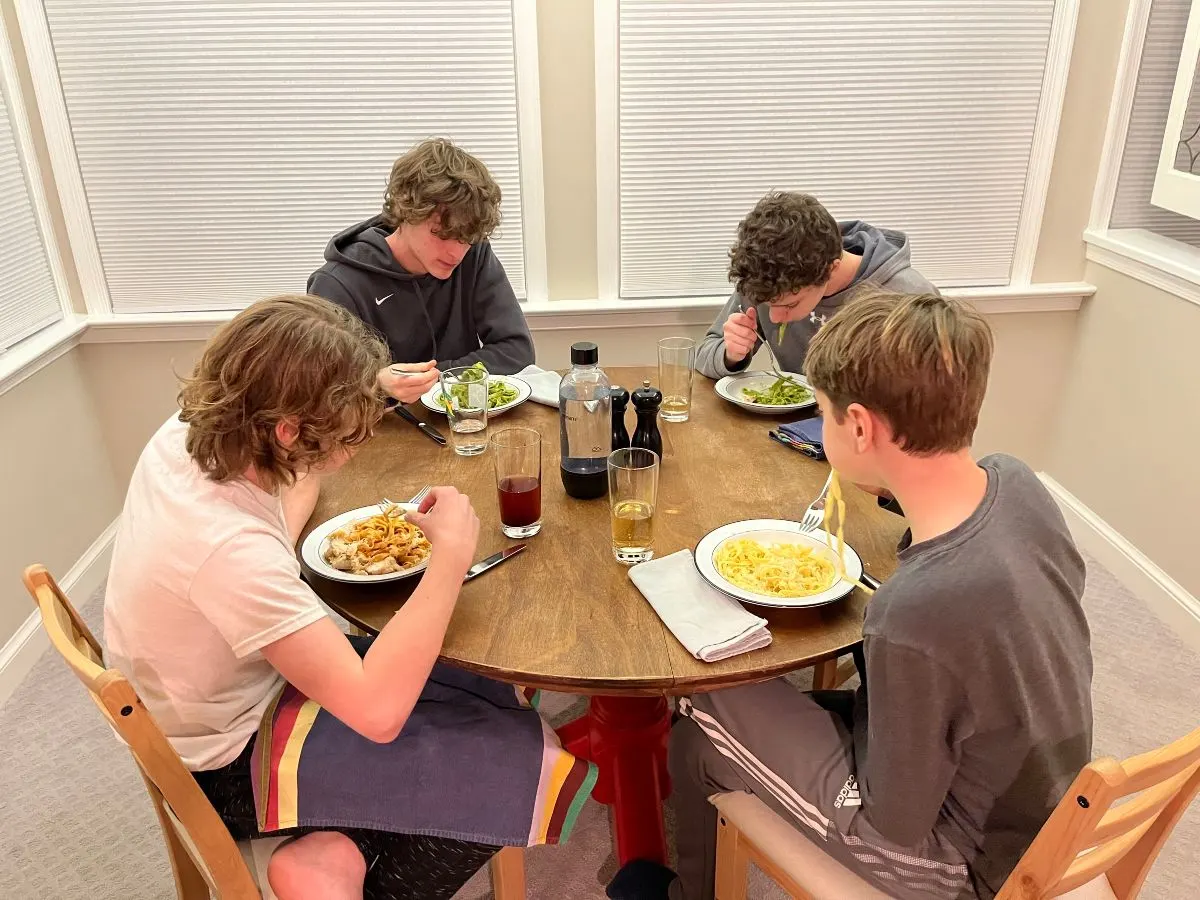
When I learned that my second child was also going to be a boy, a moment of panic struck as my first thought was: how are we going to pay the grocery bills when they get older?!
You see, big eaters have always been a part of my life. I grew up with a younger brother who grew something like 10 inches in a year, eventually landing just shy of 6’4.” I am married to a man who, while not very tall, comes from a long line of slender men who eat like linebackers. And most of my best friends in high school were guys, so I know all too well how much teen boys can eat.
Well, guess what? My family has reached the moment of truth. My boys are now 13 and 16, and I know it is only going to get worse, I have already seen an increase in our food bills and the quantity of food that seems to be required, especially in the late afternoon.
So I wanted to share with you what I’m doing to feed my teens on a budget and also what I’ve learned from others who have more experience than I do.
Three Legs of the Fullness Stool
Whether putting together a meal or snack, one important component to keep in mind that will help to keep those growing bodies satisfied for longer is what I like to call the three legs of the fullness stool: fat, fiber, and protein.
Having all three of these pieces in a meal helps to keep teens full and functioning for longer. This, in turn, means less filler food needed, making it easier to feed teens on a budget. Let’s discuss each component.
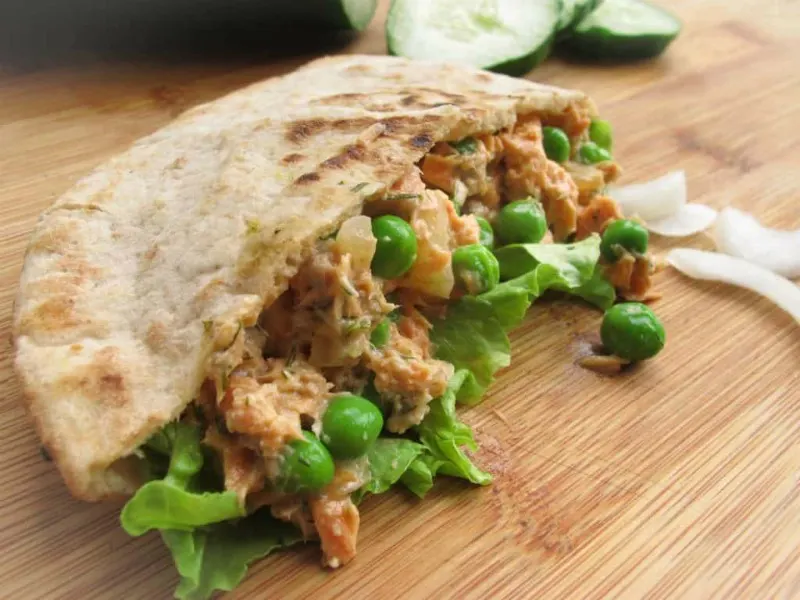
Fat
While many of us were raised to believe that fat is bad, it is more complicated than that. Fat is an essential part of a healthy diet. You need fat to give you energy, promote cell growth, absorb certain nutrients, and balance out hormones (and what teenager doesn’t need help with this?). Having said that, there are fats that we should eat more of, fats we should eat moderately, and fats we should avoid.
“Good” fats
Monounsaturated fats (think olive oil, avocados, nuts, and peanut butter) are plentiful in a Mediterranean diet and polyunsaturated fats such as Omega-3 fatty acids (think salmon, sardines, flaxseeds, and walnuts) are what you could call “good” fats. These fats help with brain development, as well as raising good cholesterol, lowering bad cholesterol, and reducing inflammation.
“OK” fats
Saturated fats (think dairy products, red meat, coconut oil) are “ok” fats. They help to keep you full for longer, but should be eaten in moderation as they are tied to higher cholesterol levels, although the evidence that they lead to a higher risk of heart disease is murky as new research has come out. At this point, scientists recommend that saturated fats account for about 10% of our daily caloric intake.
“Bad” fats
Trans fats became popular among food processors because of their long shelf life, but they offer no health benefits and, in fact, can do a lot of damage. These are less and less prevalent in our food, but still sometimes show up in packaged foods. Try to avoid them whenever possible.
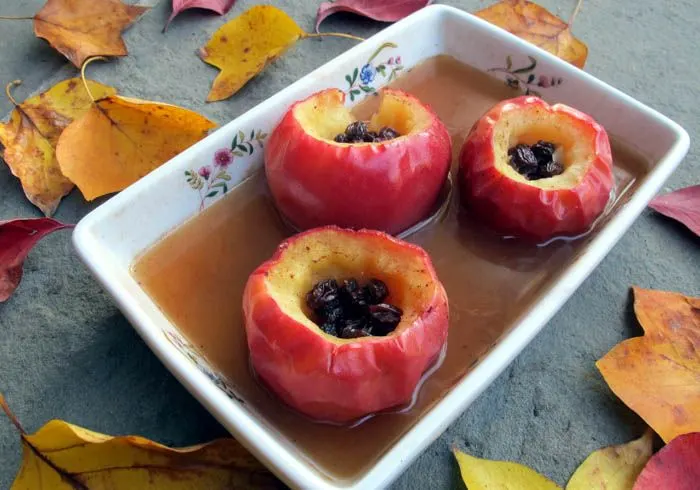
Fiber
Fiber, especially when it comes in the form of fruits, vegetables, and whole grains are wonderful for keeping bellies full for longer (because they take longer to break down), stabilizing blood sugar, and keeping our digestive systems running smoothly.
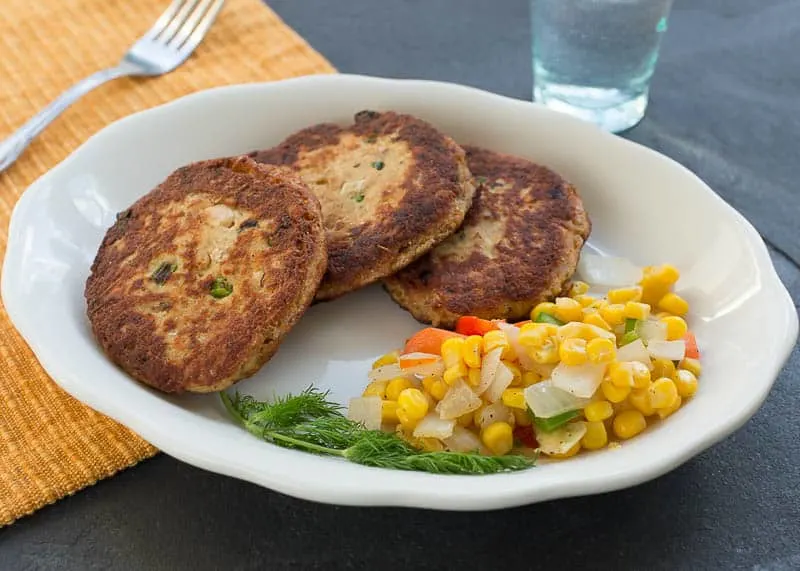
Protein
Every body needs protein, and growing bodies need it even more. Protein is what the body uses to build and repair tissue, make enzymes and hormones, and build bone and muscle. It is also essential for brain function and development.
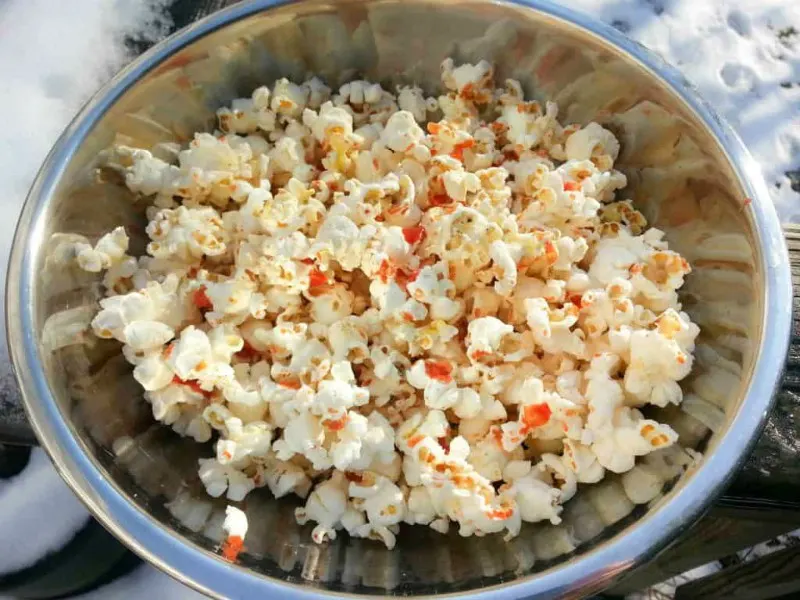
Ideal Snacks for Hungry Teens
So what would an ideal snack look like using these three components? Here are some examples:
- Apples or celery sticks with peanut butter or another nut butter
- Whole grain muffins with walnuts
- Toast (preferably whole grain) with peanut butter and banana
- Whole grain toast with smoked salmon and cucumber/tomatoes/bell pepper
- Popcorn and a smoothie
- A snack platter with whole grain crackers or pretzels, veggie sticks, and hummus or cheese
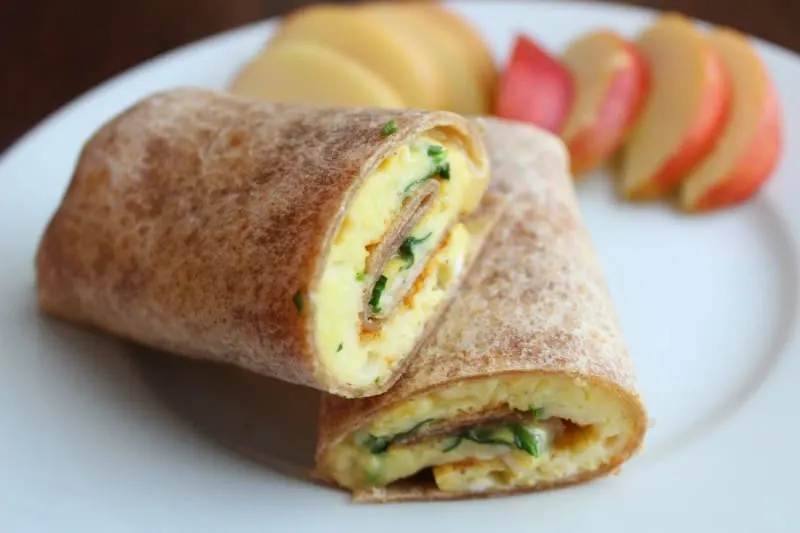
Cheap Staples Save the Day
Getting filling, long-lasting meals into your kid’s bodies is one piece of the how to feed teens on a budget puzzle, another component is stocking the house with cheap staples that will serve you well.
The ideal staples are nutritious, filling, and low cost.
An added bonus: these items don’t require a lot of preparation in order to be enjoyed, after all no one enjoys battling a hungry teenager
Some of my favorite cheap staples are:
Beans
A super cheap and filling food, that can easily be added to quesadillas or burritos, soups and stews, or turned into a dip for snack time (beans provide both protein and fiber)
Grains
Whether you’re eating rice, couscous, pasta, or another grain, grains tend to be incredibly cheap and easy to prepare. Ideally you can offer the whole grain versions, but even the less healthy ones are a good base for a quick meal or snack. We love to throw already cooked grains into salads, soups, and stews to make them stretch farther. Note: the whole grain versions contain more fiber.
Eggs
These are a nutritional powerhouse, containing both protein and fat, and can be cooked in 2 – 3 minutes. We often serve eggs for breakfast in our house. But I also like to make a big batch of hard-boiled eggs to enjoy in lunches and snacks.
Popcorn
We buy it un-popped so that we can pop it ourselves and then flavor it in all different ways so that it doesn’t get old. Bonus: popcorn is a whole grain and provides a good amount of fiber.
Frozen fruit
I always have a bag or two of frozen fruit in my freezer. This is a great way to get some of the more expensive fruits, such as berries, at a lower price point. We use them for smoothies, mixed into baked goods, with oatmeal or overnight oats, and thawed and then served with plain, unsweetened yogurt.
Apples and Bananas
These tend to be some of the cheaper fruit options and last pretty well. In addition, they are also both hearty and pair well with lots of foods.
Carrots and Celery
These veggie staples last a long time in the fridge and make a great addition to a snack platter or lunch box.
Peanut Butter
A great, cheap source of protein. Peanut butter is quick and easy answer for meals and snacks, but can also be added to lots of meals (check out our post on how to cook with peanut butter for ideas!). If you can, try to get the natural versions without added sugars or oils.
For more pantry staples ideas, check out The Scramble’s essential pantry staples list.
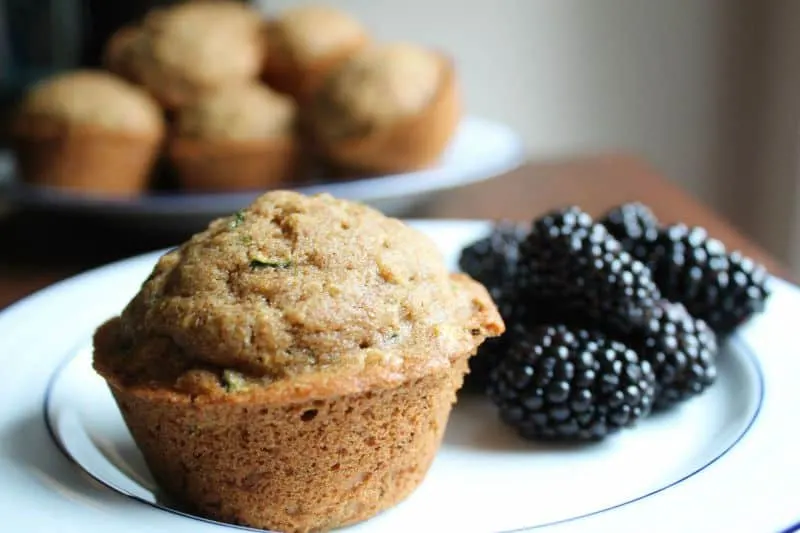
Double or Triple and Freeze
Homemade versions of snacks and meals are almost always going to be cheaper, healthier, and tastier than the store-bought varieties, making them a winner when it comes to feeding teens on a budget.
So whenever I make a meal that’s both popular with my boys and freezable, I make a double or triple batch. The leftovers I then use to stock the freezer with options for lunches or hearty afternoon snacks. Some examples include:
Whole grain baked goods
Muffins, waffles, and scones are all favorites.
Tex-Mex favorites
Burritos and chimichangas are always winners in my house, plus they are filled with low cost ingredients like beans and rice!
Calzones or pizza rolls
Calzones are happy little pockets of goodness, that can include vegetables as well as sauce and cheese. And pizza rolls are a fun and freezable dish my boys love. I use this pizza roll recipe from Super Healthy Kids as a template and pack as many veggies in as I can.
Soups, Stews, and Chilis
I like to freeze soups, stews, and chilis in individual portions to make access even easier to enjoy.
Smoothies
Like the soups and stews, I freeze smoothies in individual portions so that they can be an easy grab-and-go addition to lunchboxes.
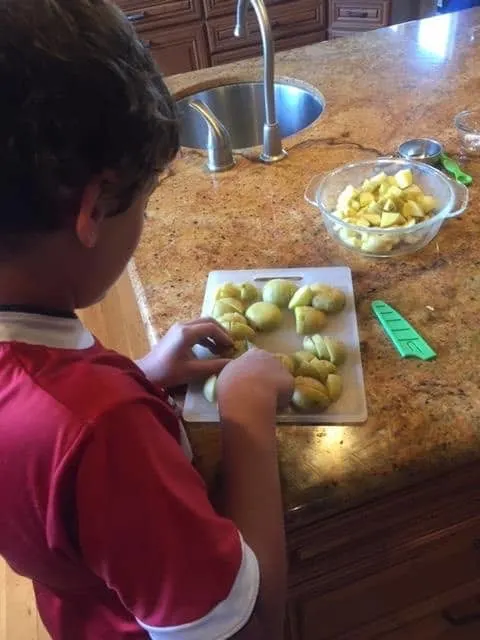
Teach Them to Cook
This is a bit of an unconventional tip when it comes to feeding a family on a budget, but it is one that can have a huge impact since homemade food is cheaper, healthier, and tastier. If we teach our kids to cook, they are then able to whip up an egg or bake their own muffins rather than seeking out pre-made, more expensive options.
My dad tells a story about how at 12-years-old he used to come home from school and make three grilled cheese and tomato sandwiches for an afternoon snack. While that may have meant that his family was going through huge amounts of bread and cheese, it also meant he was eating nourishing food rather than chips or other empty calories that would leave him hungry sooner rather than later.
So if your teen isn’t yet confident in the kitchen, start with some basics that they love. Some great introductory dishes include scrambled eggs, grilled cheese, quesadillas, and smoothies.
No matter what, get them into the kitchen and feeding themselves, your wallet will thank you.
More Resources
If you’d like to keep your food costs down overall, try out The Scramble’s online meal planning service. Our members report saving as much as $90 a week on food!
We also have some other posts that you will find helpful:
How to Feed Your Family in a Budget
Do you have tricks to feeding teens on a budget? I’d love to hear about them in the comments (especially since I’m still in early days of this insanity)!

Healthy Lunch and After School Snack Ideas for Teens
Thursday 23rd of July 2020
[…] How to Feed Teens on a Budget […]
How to Feed Your Family on a Budget feeding large family on tight budget
Tuesday 21st of July 2020
[…] more ideas for how to feed your family on a budget? Check out our article on feeding teens on a budget, which are tips that can be used […]
How to Cook with Peanut Butter and Recipes to Get You Started
Tuesday 14th of January 2020
[…] Let’s be honest, feeding a family is not cheap. And as kids get bigger, the costs only continue to rise (as the mom of a tween and almost-tween I could talk for hours about how expensive it is to feed two growing boys). […]